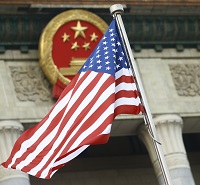US has become both the biggest winner and loser in trade with China. While exports to China sky rocketed, those still facing hefty tariffs, are feeling the pain. Last month, more than 100 US businesses wrote to Trump urging him to suspend tariffs on Chinese-made goods and global steel imports, which according to them, could boost the US economy by $75 billion.
 Though the first quarter data released by China recently indicates considerable pain inflicted by COVID-19 on the country's trade but it also highlights an increasingly diversified external market for Chinese products, with the Association of Southeast Asian Nations (ASEAN) becoming China's largest trading partner and trade with markets along the Belt and Road Initiative (BRI) steadily rising.
Though the first quarter data released by China recently indicates considerable pain inflicted by COVID-19 on the country's trade but it also highlights an increasingly diversified external market for Chinese products, with the Association of Southeast Asian Nations (ASEAN) becoming China's largest trading partner and trade with markets along the Belt and Road Initiative (BRI) steadily rising.
US emerges biggest winner and loser
The data reveals, the US has become both the biggest winner and loser in trade with China. While exports to China sky rocketed, those still facing hefty tariffs, are feeling the pain. As Gao Lingyun, an expert at the Chinese Academy of Social Sciences told the Global Times, there are two points to take away from this data: one, China has been implementing the phase one trade agreement as planned; two, the pandemic and remaining tariffs have caused major losses in bilateral trade.
While losses caused by the pandemic are out of control, tariffs are a man-made issue that should be addressed. Last month, more than 100 US businesses wrote to Trump urging him to suspend tariffs on Chinese-made goods and global steel imports, which according to them, could boost the US economy by $75 billion. Such faltering domestic support for Trump in the trade war, coupled with improving signs for China's trade over the past three months sees Trump at a disadvantage in talks for a phase two agreement.
wrote to Trump urging him to suspend tariffs on Chinese-made goods and global steel imports, which according to them, could boost the US economy by $75 billion. Such faltering domestic support for Trump in the trade war, coupled with improving signs for China's trade over the past three months sees Trump at a disadvantage in talks for a phase two agreement.
Diversifying markets add to China’s advantage
Also putting China in a more favorable place is increasingly diversifying export market in the first quarter; the ASEAN region overtook the EU as China's largest trading partner, with bilateral trade volume rising 6.1 per cent to 991.34 billion Yuan. Trade within ASEAN, China, Japan and South Korean, plus India, Australia and New Zealand, is bigger than that of other regions.
Apart from their geographically close proximity, major players in the region have continued to boost integration in recent years, though internal disagreements remain. China has free trade agreements with many of them, including ASEAN, Australia and New Zealand, with more underway, including -- the Regional Comprehensive Economic Partnership, or RCEP. In wake of the coronavirus pandemic, some in the region are eyeing even closer cooperation. Chinese Premier Li Keqiang called for joint efforts to revive economic development and push for regional economic integration, including reducing tariffs and removing trade barriers. Chinese According to him, if the countries join hands, they could not only be able to effectively stop the virus from returning to the region but also lead the global economy to recovery
Machinery, textile exports drop
In the first quarter, Chinese trade with countries along the BRI grew by 3.2 percent, 9.6 percentage points higher than the pace of overall growth. Still, the COVID-19 pandemic has proven to be extremely painful for many Chinese sectors, including machinery, electronics and textiles. In the first quarter, export of machinery and electronics, which account for nearly 60 percent of China's total exports, dropped 11.5 percent, while export of textiles, garments and other labor-intensive sectors fell 15.3 percent. The sharp losses were caused by weeks of closures due to the epidemic, but the fast pace of work resumption and a slew of policy support measures have already lifted exports in the last month of the quarter, according to Ming Ming, Chief Macroeconomic and Fixed-income Analyst at CITIC Securities.
Behind this rebound is an emerging reality that the world still needs China's manufacturing sector despite a few Western officials urging companies to relocate their production outside of China











